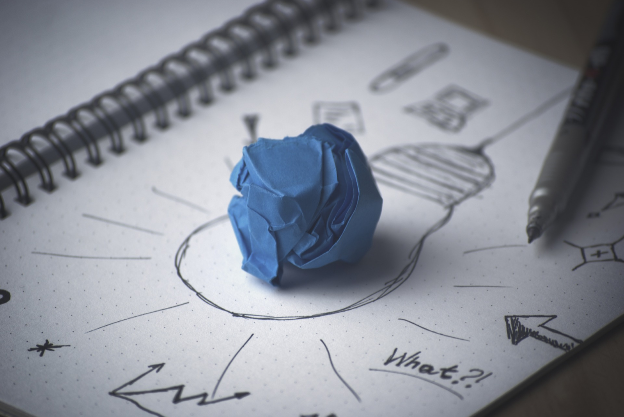Websites are still a super important part of a business’s branding strategy. They are an extremely critical weapon that, if used correctly, can still help you reap rich dividends in the form of leads and sales. The fact of the matter is that websites have never gone out of fashion. But, there is a significant rider here. It’s only the best websites that work. So what separates the best from the rest? While the various experimental and impressive looking design elements do their bit towards impressing website visitors, what essentially differentiates a successful website from a not so successful website, is the process,the seamlessness and completeness of this process.
Basically, the process defines the thinking that has been put into the website and its look and feel. The process is everything. Whether you are a website designer or a client who wants his/her website designed, think of the final site as your destination and the process as a series of directions you have to take to reach that destination.
You will be lost if you lose your direction.
So, let’s take a look at the various critical aspects of the web design process. Get these aspects wrong and you might just not reach your destination – a well-designed, conversion friendly, lead generation machine, a.k.a. your site.
1. The Why, Who and How of the Site (The Client Perspective and the Designer Perspective)

Image: darkmoon1968 / Pixabay
Why do you need the site?
Who is it for?
How Do You Want to Reach Your Goals through The Site?
While these sound like elementary questions, you will be surprised how often these are ignored.
The Client: As a client, you must be very clear about the site’s objectives and why is it that you want to build a website? Is it purely a branding tool? Will the website also double as a sales tool? Is it a lead generator? Is it an information guide or is it something else? You need to work out a clear answer to these questions.
The Designer: As a designer, your job is extremely challenging (to put it mildly). You not only must know the objectives of the website but also the ins and outs of the client’s business. This is an extremely critical first step in the design process. If you cannot understand what the client’s business is all about, how do you even begin to conceptualize a site that will help deliver the kind of ROI the client is looking for? So ask questions and keep asking until you have all the answers.
Here are two most important elements:
Pitch to the client: The initial stage of any project is about understanding how you can help your client and provide some value. You need to identify website’s and client’s goal. So you need to pitch some questions to your client:
What’s their website’s primary aim? Who is the target audience of website? What message client want to convey through the site? Who are the competitors?
Time management: One of the most common and difficult challenge for a web design project is time management. If the client has some additional requirement, it will change the schedule and deadlines. If you’re designing an app, emails along with building website. It will take some extra time. Gantt Chart tool will help you to set a timeline for the project, manage your time, and track all the steps.
2. The Design

Image: fancycrave1 / Pixabay
Now that you know what the client wants, you need to start giving life to the information you have gathered. A good designer spends a considerable amount of time in creating a wireframe and identifying the various design elements that will be a part of the visual layout of the website.
A website wireframe is the single most important phase of any and every web design process so you need to get it right and invest time and effort into the proceedings. Photoshop is still one of the best tools you can use to create mock-ups with the design elements you believe are the best fit for the website. What you are essentially doing is ensuring that your client can clearly visualize the website and how it will look and you can keep iterating the mockups easily till you and the client are on the same page.
It is imperative that you start coding the web design only after you get the green signal from the client. Otherwise, you will have a situation wherein the client keeps suggesting changes to the website during the coding process. This will eat up into your project time and at the end of the day, you might not have a viable project on your hands, from the cost perspective.
Once you and the client have zeroed in on the final mock-up, it’s time for HTML and CSS coding. This will help you get all the visuals together, which means your website is finally taking shape. You then move on to ‘development territory’ where your job as a designer ends (for the time being) and moves to the development team. Even during this phase of the design process, you will need to keep a tight hold on things to ensure the development of the website doesn’t impact its design.
3. The Polishing

Image: All Creative Commons License
You need to get this phase of the process right as well. Why? Despite your best efforts, there is always a chance that there is still something missing in your website’s design. The success of a website’s design lies in the details. While building a website, you must ensure that you get even the most ordinary or “inconsequential” design elements right. You might think that a particular element is unimportant, but that particular element might have the power to make or break your site.
A critical step, which has to be managed during the process of web design, is the integration of SEO within the design elements. This includes alt-tagging each picture on your site, and also ensuring that the images you use load quickly. Something else you need to do is make your site mobile friendly, meaning it should render effectively on all mobile devices of the website’s target audience, irrespective of the device screen size. This not only ensures your website reaches a wider audience but also helps it earn SEO brownie points.
Contemporary website designing is all about using an integrated approach for designing a website. Gone are the days when web designers and developers were the sole stakeholders of the design process. Today, you also need to get the marketing team in the loop while designing the site. They will have their own inputs vis-à-vis the design of the site and how it can be leveraged to market the client’s business. A web designer sees a website, but a marketer sees a website as a marketing and communication tool. Marketers know well their target market (and what visitors want to see when they get the site). A marketer can help you to design a website which will benefit their audience. Web design is a complex process that involves everyone including, developers, marketers, and SEOs to come together to create a fantastic website.
There is no ads to display, Please add some



